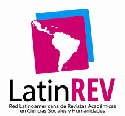Government Communication and Information Activists: The Struggles to Build Political Legitimacy among Young Citizens
DOI:
https://doi.org/10.26439/contratexto2017.n027.1573Abstract
This article is an approximation to the analysis of the transit from electoral communication to government communication, a period that is usually addressed as two differentiated dimensions, but which can be enhanced to contribute to the governments’ legitimacy and their relationship with citizens (information activists). After measuring university students and professionals’ electoral preferences in Lima, we conclude that the articulation of electoral and government communication consists not only in recognizing the expectations of these citizens, widely expressed during political campaigns, but also in consolidating dialogue channels during the government administration.
Downloads
Downloads
Published
Issue
Section
License
All of the works published are licensed under a CC BY 4.0 Creative Commons Attribution license. (updated on March 1st 2021)
The content of the journal may be shared in any material or format. The content may be adapted, contributed upon and transformed. Both possibilities are only permitted in so far as they complete the following conditions:
- Attribution: Credit must be given where it is due, a link to the license must be provided and changes, if made, must be indicated. This should be done in the manner deemed appropriate, without suggesting that the licensor promotes you or your use of the material.
Ownership rights
The patrimonial rights for Contratexto are published under a Creative Commons BY 4.0 license, allowing authors to keep the patrimonial rights to their work without restrictions.
If a work published in Contratexto were to be copied, distributed, spread, or any other activities contemplated in the aforementioned license, the author(s) and the journal must be mentioned visibly and expressly.
Self-archive
This journal allows and encourages authors to post items submitted to the journal on personal websites or institutional repositories both prior to and after publication, while providing bibliographic details that credit, if applicable, its publication in this journal.

















